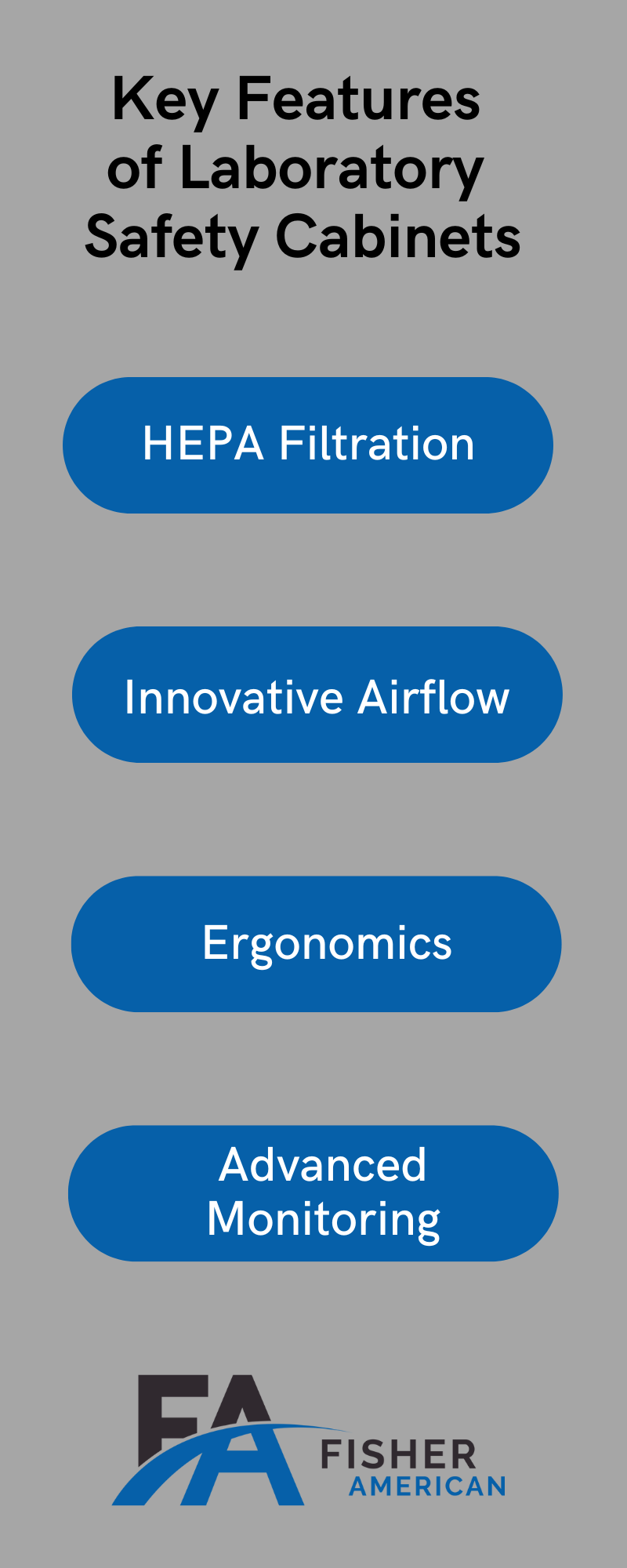Scientific laboratories prioritize discovery and, above all, safety. One critical safety tool is the laboratory cabinet. Also known as bio-safety cabinets or BSCs, safety cabinets ensure the protection of lives, valuable materials, and the smooth operation of scientific work. Let’s explore their significance, structure, and the features that make them significant in labs.
Protection
In a lab with potentially hazardous materials, safety cabinets are protectors. They create a controlled environment, ensuring scientists are shielded from accidental exposure to danger.
Life Protection: Safety cabinets establish a secure zone that shields users from accidental contact with dangerous materials, preventing toxic fumes, splashes, and particles from escaping.
Material Protection: Beyond personal safety, these cabinets safeguard delicate experiments and valuable samples from contamination.
Construction and Design
Safety cabinets come in various designs, tailored to specific lab needs: Class I, Class II, and Class III cabinets.
Class I Safety Cabinets: These units offer personnel and environmental protection. They draw in lab air, capturing harmful elements. A part of the air is filtered before being safely released into the lab.
Class II Safety Cabinets: Class II cabinets take protection a step further by filtering exhaust air, ensuring no contamination occurs. They also use HEPA filters to trap tiny particles.
Class III Safety Cabinets: These cabinets provide the highest level of protection, with a completely sealed workspace. Operators interact with materials through glove ports, ensuring a barrier against hazardous substances.
Key Features of Laboratory Safety Cabinets
HEPA Filtration: High-efficiency particulate air (HEPA) filters are crucial in safety cabinets. They effectively capture airborne particles and pathogens, ensuring clean exhaust air.
Innovative Airflow: Cabinets maintain a carefully designed airflow pattern, constantly drawing lab air through filtration, protecting both users and materials.
Ergonomics: Modern safety cabinets prioritize user comfort and convenience, offering adjustable work surfaces, ergonomic chairs, and user-friendly controls.
Advanced Monitoring: Many cabinets include monitoring systems that track factors like airflow, filter status, and UV light, ensuring optimal functionality.

Embracing Sustainability
As sustainability gains importance, safety cabinets are evolving to be more eco-friendly.
Energy-Efficient Design
Modern cabinets incorporate energy-saving features, reducing power consumption. Here are some examples:
Variable Speed Blowers: Safety cabinets with adjustable blower speeds can tailor airflow to match specific work conditions. Lowering the blower speed when not handling hazardous materials reduces energy consumption.
Occupancy Sensors: Some safety cabinets are equipped with occupancy sensors that detect when someone is present. When the cabinet is unoccupied, it can lower the blower speed or even switch to standby mode to save energy.
LED Lighting: Energy-efficient LED lights are used for interior cabinet lighting. They consume less electricity compared to traditional fluorescent lights, reducing the overall energy load.
Timers: Safety cabinets may have programmable timers that allow users to set specific operating hours. This ensures that the cabinet is only running when needed, reducing energy waste during off-hours.
Automatic Sash Closers: Cabinets equipped with automatic sash closers help maintain the cabinet’s integrity by ensuring the sash is closed when not in use, which prevents unnecessary air handling.
HEPA Filter Monitors: These systems alert users when HEPA filters need replacement. This prevents the cabinet from overworking to compensate for filter blockage, which can save energy.
Smart Controllers: Some safety cabinets are equipped with intelligent control systems that can optimize airflow and reduce energy consumption based on real-time conditions within the cabinet.
Eco-Mode: Certain safety cabinets have an eco-mode that reduces blower speed and energy consumption when no activity is detected, providing energy savings during idle periods.
Ensuring Well-Being and Integrity
Laboratory safety cabinets are essential for protecting lives, valuable research, and the environment. They quietly serve as safety guardians, enabling scientific progress and contributing to a safer and more sustainable future. It’s important to recognize the significant role these cabinets play in ensuring the well-being of researchers and the integrity of their work. If you have questions or need assistance choosing the right product for your laboratory, please don’t hesitate to contact us.


